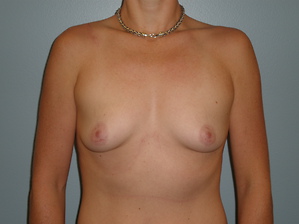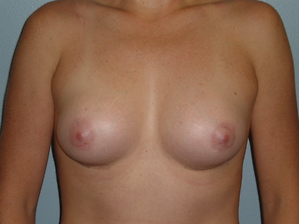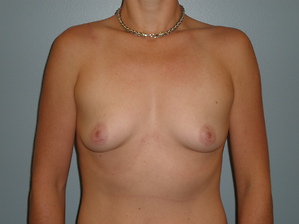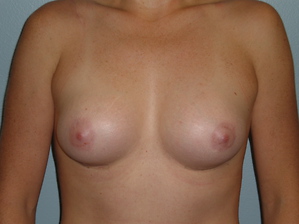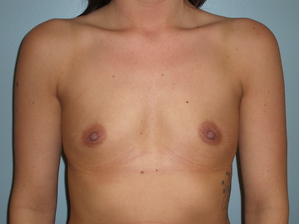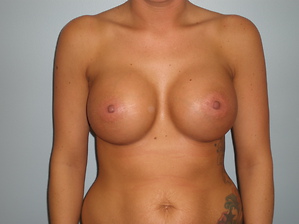Quick Links
- What Is A Breast Augmentation?
- Breast Implant Surgery Details
- Candidates For Breast Augmentation Surgery
- Types Of Breast Augmentation Incisions
- Breast Implant Placement Options
- Before & After Photos
- Breast Implant Surgery Details
- Types Of Implants For Breast Augmentation
- Types Of Silicone Shell Breast Augmentation Implants
- Alternatives To Breast Augmentation
- What To Expect During The Consultation
- The Breast Augmentation Procedure
- Recovering From Breast Augmentation Surgery
- What To Expect Following A Breast Augmentation
What is a Breast Augmentation?
Breast augmentation, or augmentation mammoplasty, is one of the most popular surgeries that Dr. Rocheford performs. Many women in Minneapolis-St. Paul considering breast implants have thought about it a great deal and has a variety of reasons for choosing breast augmentation.
Concerns about breast fullness and shape, as well as asymmetry—differences in breast size—are among the most common reasons for people looking for breast augmentation surgery. Breast asymmetry can make it difficult to find a properly fitting bra, or contribute to low self-confidence or insecurity in certain clothing. In addition, changes following pregnancy, nursing, or weight loss can affect how breast augmentation patients perceive themselves and can impact their relationships. In some cases, breast augmentation is combined with a breast lift for optimal enhancement.
There are several breast augmentation procedures that can be done through an inframammary, axillary, or areolar incision. The incision is three to five centimeters in length, depending on whether a silicone or saline implant is used. Breast implant placement can be either under or on top of the muscle based on your anatomy and preference. The incision is closed with dissolving sutures and will be hidden under the crease of your breast.
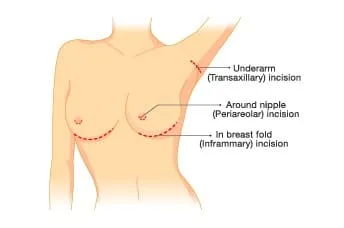
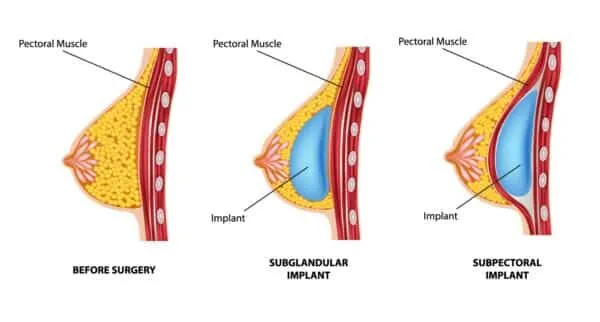
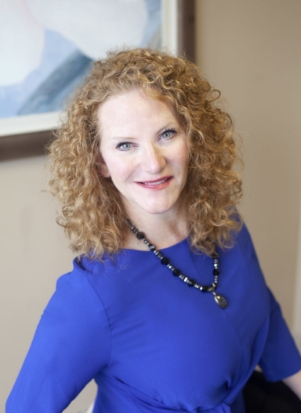
Heather Rocheford, MD
BOARD CERTIFIED PLASTIC SURGEON
There are so many fads and false promises out there. It’s almost impossible to make a confident decision without trusted advice, and that’s what I’m here for. My goal is to help you understand what is right for you – based on your unique situation.
Meet Dr. RochefordBreast Implant Surgery Details
- Surgery: Breast augmentation surgery is done under general anesthesia at an outpatient facility, and patients can go home the same day. A typical breast augmentation procedure takes about 1-1.5 hours.
- Discomfort: Mild to moderate. Anticipate three to five days of needing pain medication depending on whether your breast implants are placed above or below the muscle.
- Bruising: Generally there is none upon breast augmentation recovery. If any bruising is present immediately after the procedure, it will improve in seven to 10 days.
- Swelling: One to six weeks. Most of the swelling subsides after two weeks. Swelling is typically less severe if the implants are above the chest muscle. Being overactive will worsen swelling.
- Bandages: None. The incision is covered with skin glue that wears off in a week.
- Stitches: Internal stitches will dissolve over time.
- Work: You may return to work in three to seven days if the breast implants are above the muscle or five to 10 days if they are below the muscle.
- Exercise: May be resumed in two to four weeks.
- Final Result: Seen after one to four months.
Candidates for Breast Augmentation Surgery
Ideal candidates for breast augmentation are healthy individuals who are dissatisfied with the size, shape, or symmetry of their breasts. Common motivations include restoring volume lost after pregnancy or weight loss, improving balance between uneven breasts, or enhancing naturally small breasts. Patients should be non-smokers with realistic expectations about the outcomes and recovery involved.
Types of Breast Augmentation Incisions
There are several incision options available for breast augmentation, each offering unique advantages depending on the type of implant used and patient anatomy. Dr. Rocheford typically performs breast augmentation through inframammary or periareolar incisions to ensure optimal access and minimal scarring. Incision placement is determined during your consultation and tailored to your goals and anatomy.
Peri-Aerolar Incision
The periareolar incision is made along the lower border of the areola, where the darker pigmentation can help conceal the scar. This approach provides precise control during implant placement and is commonly used in cases that require additional adjustments to nipple position or correction of asymmetry. This option may not be recommended for patients planning to breastfeed in the future.
Inframmary Incision
The inframammary incision is made in the natural crease beneath the breast and is one of the most common techniques used for breast augmentation. It allows for a clear surgical field, implant positioning, and a discreet, well-hidden scar. This approach is beneficial when placing silicone implants.
Breast Implant Placement Options
Implants can be placed either above or below the pectoral muscle, depending on your individual anatomy and goals. Each method offers different advantages in terms of appearance, recovery, and risk of complications. Dr. Rocheford will discuss both options and help you determine the most appropriate placement during your consultation.
Subgladular Placement
In subglandular placement, the implant is positioned behind the breast tissue but in front of the chest muscle. This technique may offer a faster recovery and is ideal for patients with adequate natural breast tissue to cover the implant. However, it may be more prone to visible rippling or capsular contracture in patients with thinner skin.
Submuscular Placement
Submuscular placement involves positioning the implant beneath the chest muscle, providing additional coverage and a more natural contour. This method is often preferred for women with less native breast tissue and can reduce the risk of implant visibility or rippling. Recovery may take slightly longer, but the results tend to be more natural-looking and long-lasting.
Before & After Photos
Before-and-after photos can help you determine the types of results that can be achieved with breast augmentation.
Breast Implant Surgery Details
This includes your surgical fee and all follow-up visits with board-certified plastic surgeon Dr. Rocheford. This estimate also includes the facility fee and anesthesia costs. However, this pricing is an estimate and may be different depending on your specific situation. It does not include the cost of your pre-operative physical, lab tests, or medications. Dr. Rocheford does charge $100 for consultations, and that fee is deducted from the price of your surgery or in-office procedure. There are several breast augmentation procedures that can be done through an inframammary, axillary, or areolar incision. The incision is three to five centimeters in length, depending on whether a silicone or saline implant is used. Breast implant placement can be either under or on top of the muscle based on your anatomy and preference. The incision is closed with dissolving sutures and will be hidden under the crease of your breast.
Types of Implants for Breast Augmentation
There are several types of implants available, each offering different textures, shapes, and fill materials. Options include saline, silicone, and highly cohesive silicone gel implants, commonly known as gummy bear implants. The best choice for you will depend on your anatomy, aesthetic goals, and lifestyle preferences.
Saline Implants
Saline breast implants are filled with sterile saltwater after they are placed in the body, allowing for a smaller incision during your breast surgery and customizable volume. These implants tend to feel slightly firmer and may show rippling more easily in women with less natural breast tissue. They are FDA-approved for women age 18 and older.
Silicone Implants
Silicone implants are pre-filled with a cohesive silicone gel that closely mimics the feel of natural breast tissue. These implants are popular for their natural appearance and soft texture and are FDA-approved for women age 22 and older. Silicone implants require routine monitoring to detect silent ruptures.
Gummy Bear Implants
Gummy bear implants, also known as form-stable or highly cohesive silicone implants, maintain their shape even if the shell is broken. They provide a firmer feel and are often shaped to offer more projection at the bottom and a tapered upper pole. These implants may require a slightly longer incision due to their firmness.
Fat Transfer
Fat transfer breast augmentation uses liposuction to harvest fat from other areas of your body and inject it into the breasts. This approach offers a modest increase in breast volume and is ideal for patients seeking a natural look without implants. Not all patients are suitable candidates, and results may vary depending on the fat survival rate.
Types of Silicone Shell Breast Augmentation Implants
Silicone shell implants vary in texture and shape, which can influence the feel and movement of the breasts. Options include round, smooth, textured, or anatomical implants. At Dr. Rocheford’s practice, only round, smooth implants are used to prioritize patient safety and comfort.
Round Breast Implant
Round implants are symmetrical and offer enhanced fullness in the upper part of the breast, making them a popular choice for patients seeking a more noticeable enhancement. Because they are the same shape all around, they will maintain their appearance even if they rotate. They are available in both saline and silicone fill materials.
Smooth Breast Implant
Smooth implants have a soft outer shell that allows for natural movement within the breast pocket. They tend to feel softer and have a lower risk of rippling when placed under the muscle. Smooth implants are the most commonly used option in Dr. Rocheford’s practice.
Textured and Tear Drop
Textured, anatomically shaped (tear drop) implants are not offered at our practice due to their association with BIA-ALCL, a rare form of cancer linked to textured surfaces. For patient safety, Dr. Rocheford does not use textured implants and instead offers safe, proven alternatives. Your well-being and long-term health are always our top priorities.
Alternatives to Breast Augmentation
For patients seeking breast enhancement without implants, alternatives like fat transfer or a breast lift may offer suitable results. A breast lift can restore a more youthful breast position and shape without increasing volume. During your consultation, we’ll help determine if an alternative procedure may better suit your goals.
What to Expect During the Consultation
Your consultation with Dr. Rocheford is a personalized experience focused on understanding your goals, evaluating your anatomy, and discussing your options in detail. We’ll take time to review implant types, incision locations, and placement methods, and answer all of your questions. This appointment is the first step toward making informed, confident decisions about your care.
The Breast Augmentation Procedure
Breast augmentation surgery is performed under general anesthesia in an outpatient setting and typically takes about one to one and a half hours to complete. Dr. Rocheford begins by making a small incision, either in the inframammary fold or along the areola, based on your surgical plan. Through this incision, the chosen implant is carefully inserted into a pocket either above or below the pectoral muscle, then the incision is closed with dissolvable sutures and covered with surgical skin glue. Patients are discharged the same day and provided with detailed post-operative instructions to facilitate a smooth recovery.
Recovering From Breast Augmentation Surgery
Most patients experience mild to moderate discomfort during the first few days after surgery, which is typically well managed with prescribed pain medication. Swelling can last up to six weeks, and most patients return to work within a week, depending on implant placement. Activity is gradually resumed over several weeks, with full results visible after one to four months.
What to Expect Following a Breast Augmentation
After surgery, your chest may feel tight or swollen, and you may need to wear a surgical bra for support as your body adjusts. Most patients resume light activities within a few days and return to normal routines over the following weeks. Dr. Rocheford will provide clear aftercare instructions and monitor your recovery through scheduled follow-ups.
Recent News
3 Common Types of Laser Skin Treatments
You can pile on the sunscreen and moisturize every day, but at some point you’re still going to develop wrinkles….
READ MORE3 Signs You Are a Good Candidate for a Breast Lift | Rocheford Plastic Surgery
If you have recently gained or lost weight, given birth, or become pregnant, your breasts may have shifted in size…
READ MOREPatient Resources
Whether a new or returning patient, we have plenty of resources to either help you get started or learn more about the procedure process. From patient forms to blogs, we have all the resources you’ll need to prepare yourself for your appointment.







